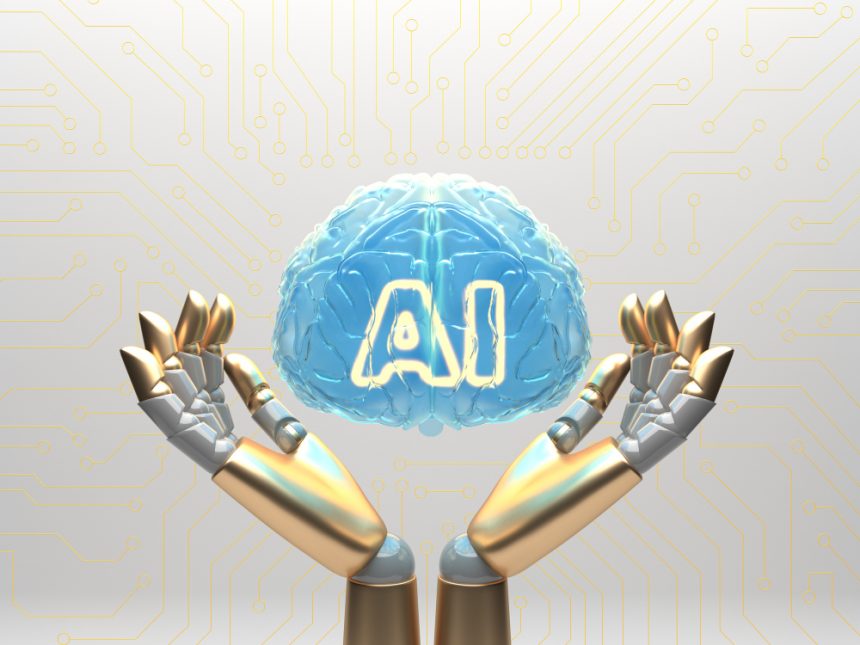Understanding AI’s Practical Impact in 2025: Moving Beyond Hype to Real-World Applications That Are Transforming Industries and Daily Life
In the rapidly evolving world of technology, artificial intelligence (AI) has often been portrayed as a futuristic marvel, promising a world of endless possibilities that sometimes seem disconnected from current realities. However, as we stand in 2025, it’s increasingly evident that AI’s greatest contributions are rooted in tangible, practical applications. These real-world implementations are reshaping industries, streamlining everyday tasks, and driving measurable improvements—without the need for dramatic hype or speculative promises.
This shift from sensationalism to pragmatism is fueled by technological advances such as more sophisticated machine learning models, broader access to quality data, and a deeper understanding of how AI can complement human efforts. Instead of viewing AI as a distant, transformative “force,” we can see it as a collaborative tool—enhancing efficiency, accuracy, and innovation in meaningful ways. Let’s explore some key sectors where AI’s current, practical impact is most evident.
Healthcare: Diagnosing and Treating with Greater Precision
One of the most compelling examples of AI’s real-world impact is in healthcare. In 2025, AI-powered diagnostic tools have become integral to medical practice. Machine learning algorithms analyze medical images—such as X-rays, MRIs, and CT scans—more quickly and accurately than traditional methods. For instance, AI systems can detect early signs of diseases like cancer, often before symptoms manifest, enabling earlier intervention and improving patient outcomes.
Moreover, AI-driven clinical decision support tools help physicians tailor treatments based on individual patient data, genetics, and medical history. This personalized approach not only enhances efficacy but also reduces trial-and-error prescribing, minimizing side effects and improving patient satisfaction.
In addition, AI assists in managing hospital workflows, predicting patient admission rates, and optimizing resource allocation—further streamlining healthcare delivery and reducing costs. These applications demonstrate how AI is transitioning from a concept to a critical component of everyday medical practice, making healthcare more precise, accessible, and efficient.
Manufacturing: Smarter, Safer, and More Efficient Production Lines
Manufacturing industries have long sought ways to improve productivity while minimizing costs and downtime. In 2025, AI-driven predictive maintenance is a prime example of practical application. Sensors embedded across machinery collect real-time data, which AI algorithms analyze to predict failures before they occur. This proactive approach prevents unexpected breakdowns, reduces maintenance costs, and increases equipment lifespan.
Additionally, AI-powered quality control systems analyze product outputs continuously, identifying defects faster and more accurately than human inspectors. This results in higher quality products, reduced waste, and more consistent standards.
Robotics, guided by AI, now perform complex assembly tasks alongside human workers, improving safety and efficiency. These advancements exemplify how AI is making manufacturing more resilient, sustainable, and competitive—grounded in measurable improvements rather than exaggerated claims about automation replacing entire industries overnight.
Education: Personalization and Accessibility
The education sector has also benefited from AI’s practical applications, transforming how students learn and teachers teach. In 2025, adaptive learning platforms use AI algorithms to analyze students’ strengths, weaknesses, and learning styles in real-time. These platforms tailor content, pace, and difficulty to individual needs, making learning more engaging and effective.
AI-based tutoring systems provide 24/7 support, answering questions, offering explanations, and guiding students through complex topics—complementing traditional classroom instruction. For students with disabilities, AI-powered tools such as speech recognition, text-to-speech, and adaptive interfaces create more accessible educational environments.
Furthermore, administrative tasks like grading and attendance tracking are automated, freeing teachers to focus more on personalized instruction and student engagement. These practical, scalable implementations are helping bridge gaps in education quality and accessibility without overpromising future capabilities.
Customer Service: Enhancing Support with AI-Driven Solutions
Customer service has seen a significant transformation driven by AI in 2025. Chatbots and virtual assistants are now sophisticated enough to handle complex inquiries with nuance and empathy. They operate around the clock, providing instant responses that improve customer satisfaction and loyalty.
These AI systems utilize natural language processing (NLP) to understand context, sentiment, and intent, allowing for more personalized interactions. For businesses, this means reduced operational costs and the ability to scale support during peak periods without sacrificing quality.
AI also helps companies analyze customer interactions to identify common issues and improve products or services proactively. These practical deployments demonstrate how AI is integrating seamlessly into customer support ecosystems, delivering real benefits grounded in current technology rather than speculative futures.
Bridging the Gap: How Real-World Use Cases Are Demonstrating AI’s True Potential in 2025
While much of the early discourse around AI was laden with hyperbole—promising revolutionary changes that could happen “any day now”—2025 offers clear evidence that AI’s most impactful contributions are already taking shape through pragmatic, well-implemented solutions.
These real-world use cases show that AI’s potential is best realized not through distant predictions but through tangible benefits—improved health outcomes, safer factories, personalized education, and better customer experiences. They underscore the importance of focusing on what AI can do today rather than what it might someday become.
By embracing this pragmatic perspective, industries and individuals can better understand AI’s current capabilities, set realistic expectations, and foster sustainable innovation. This approach ensures that AI’s deployment remains aligned with practical needs and ethical considerations, avoiding pitfalls associated with overhyped narratives.
Moving Forward: Embracing Practical AI for a Better Future
As we look beyond 2025, the key to harnessing AI’s full potential lies in continued focus on real-world applications that deliver measurable value. The goal isn’t to chase sensational claims but to integrate AI thoughtfully across sectors, ensuring that technology serves human needs effectively and responsibly.
In conclusion, AI today is no longer just a futuristic concept; it’s a practical, proven tool making a tangible difference in our lives and industries. By recognizing and supporting these real-world use cases, we can build a future where AI’s benefits are accessible, ethical, and sustainable—grounded firmly in the reality of what it can achieve today and in the near future.



